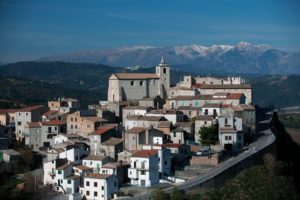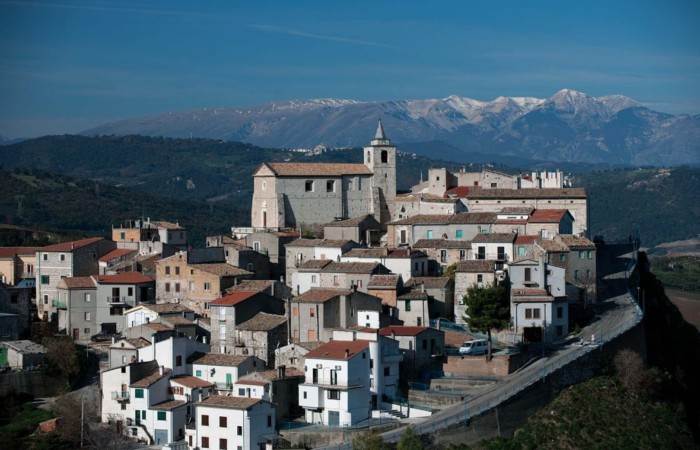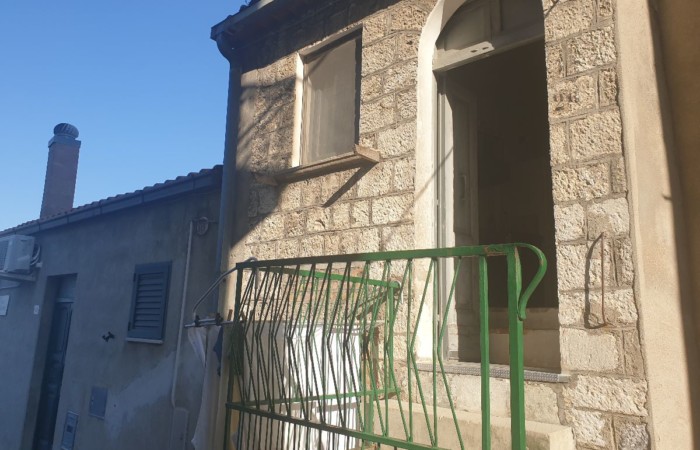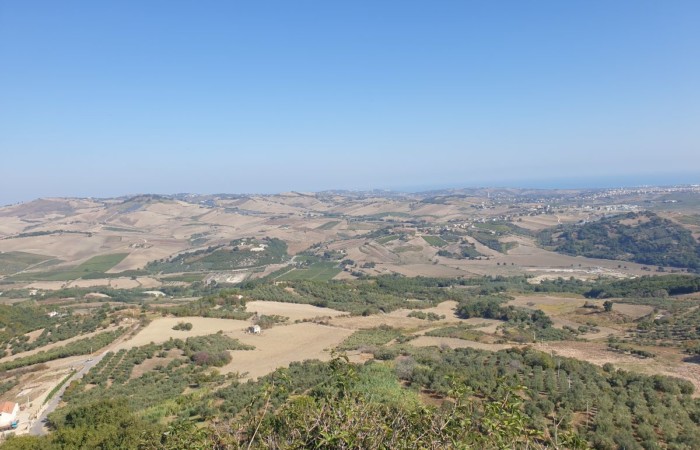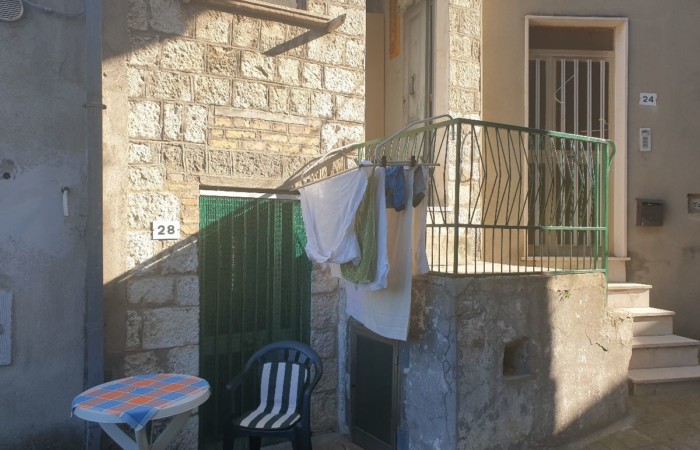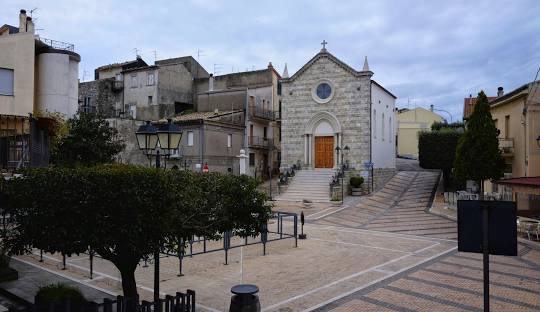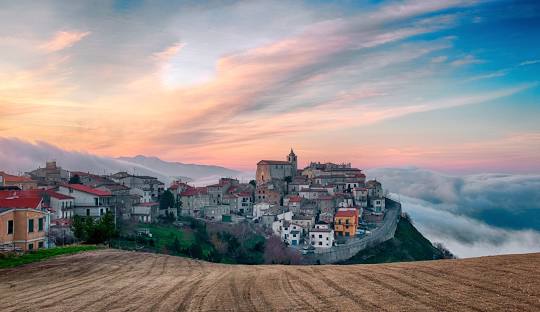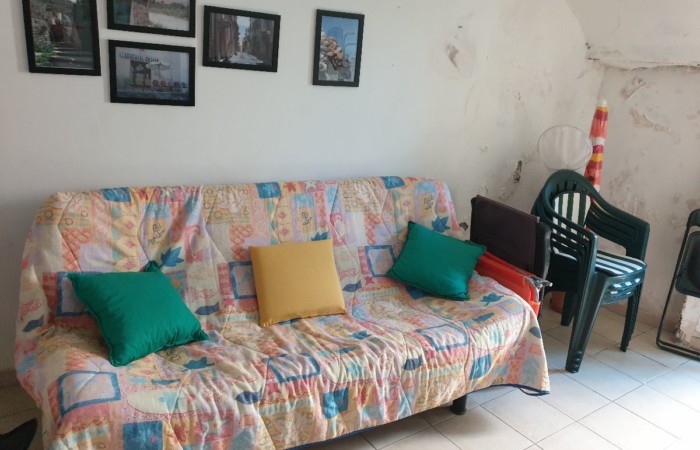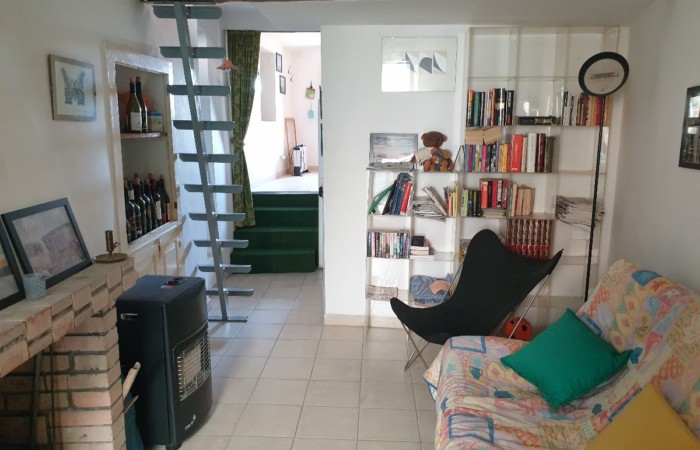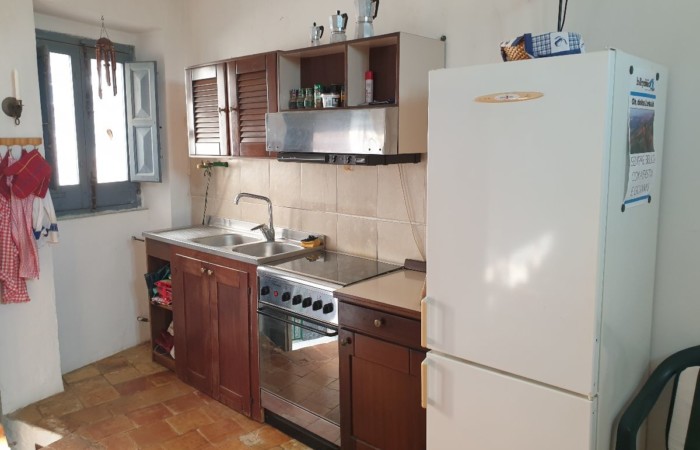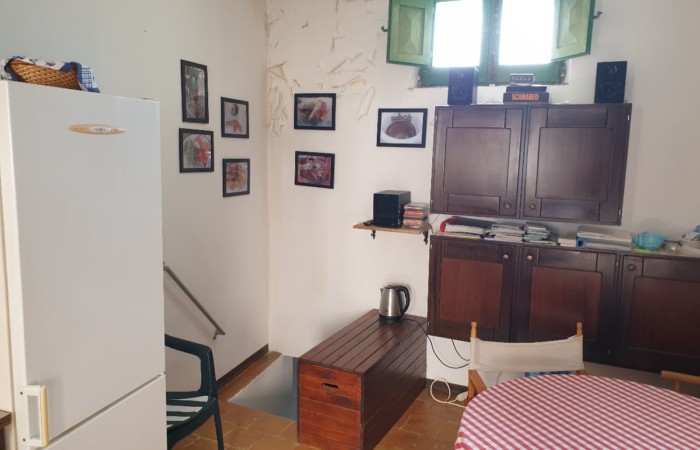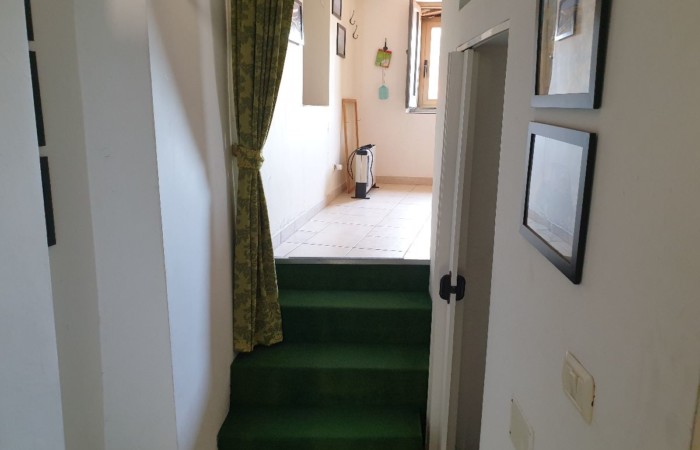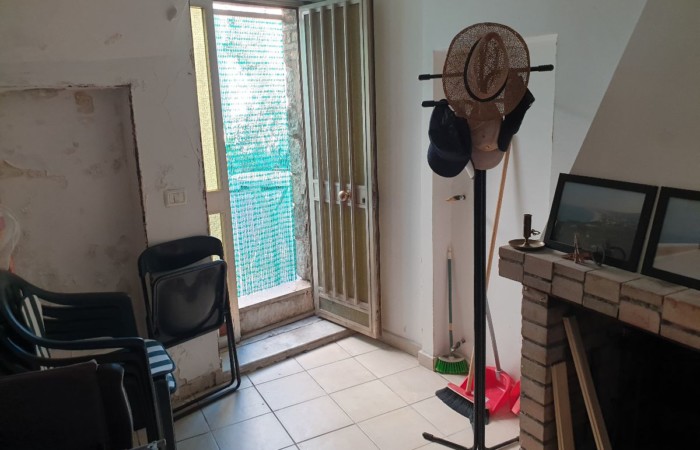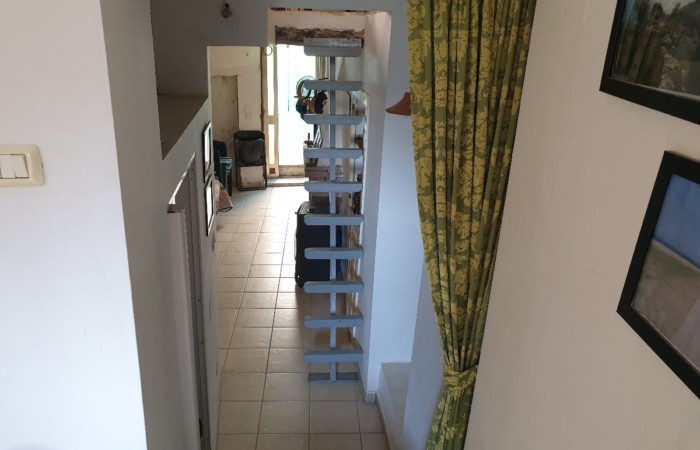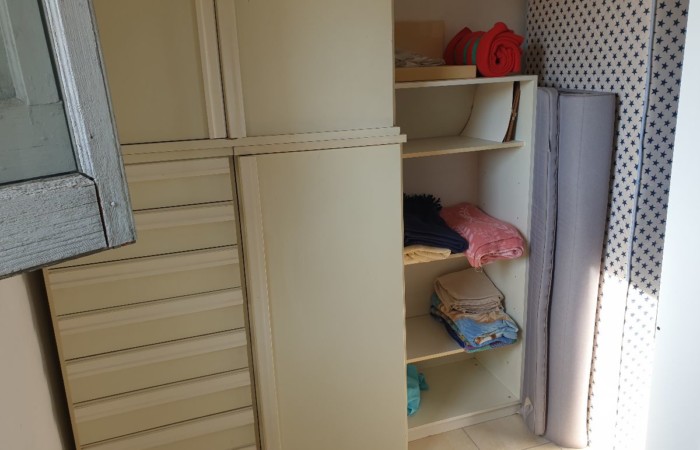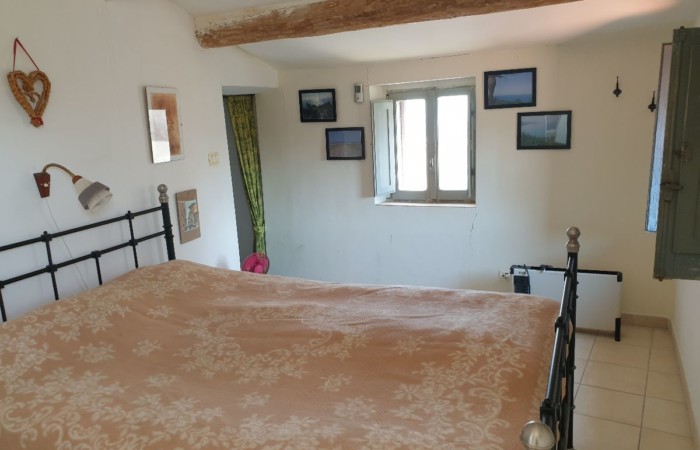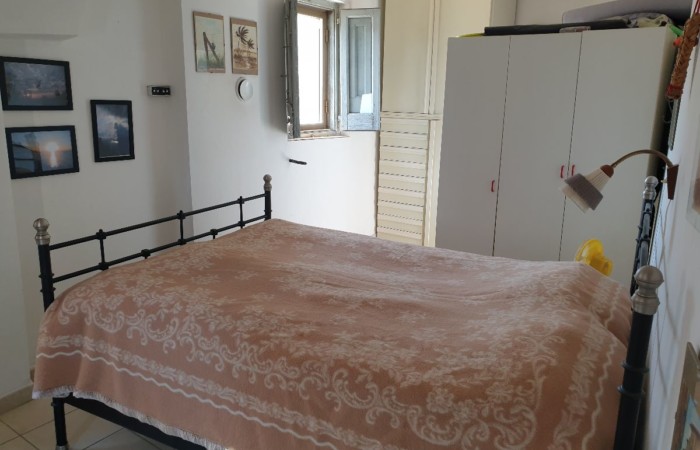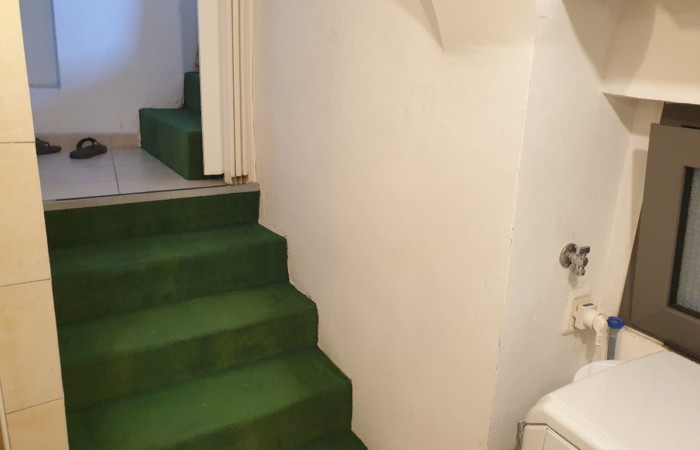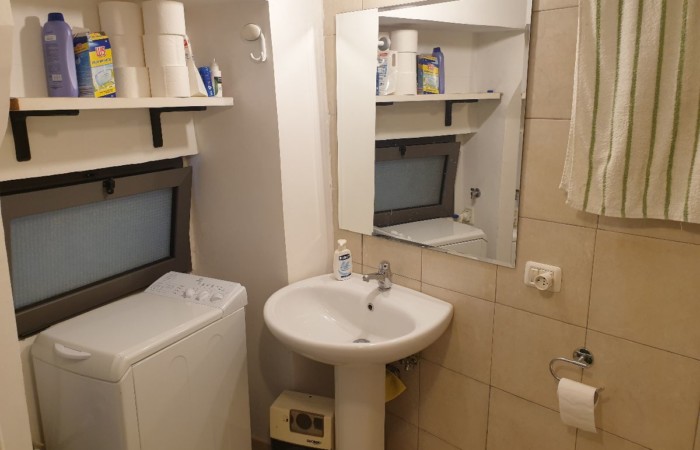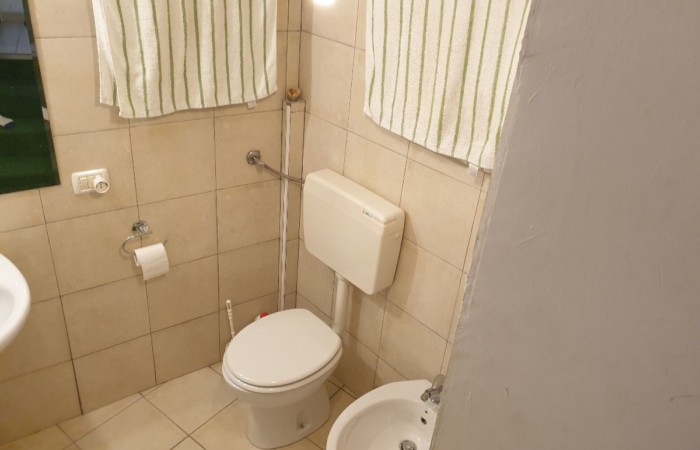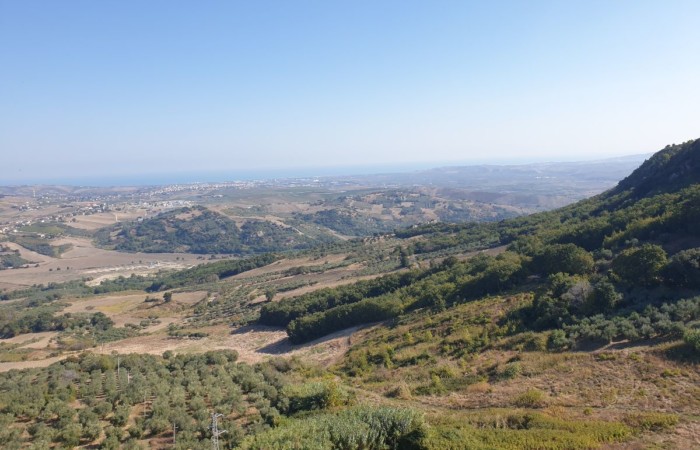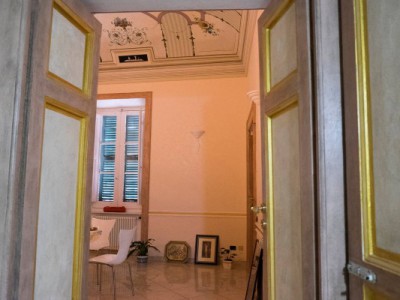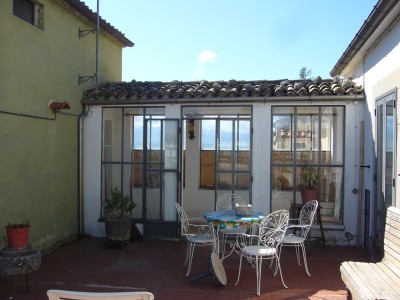Lentella (Chieti)
Details
- €59,000
- Historical , Town House
- Bedrooms: 1
- Bathrooms: 1
- Size: 65 Sq Mt.
- Year Built: 1900
- School District: Lentella
For sale a charming townhouse made of stones and bricks perched in the historic centre of Lentella with a dominant view of the Trigno valley. Lentella is a pretty hamlet completely immersed in unspoiled nature within the Medio Vastese Territory and Community.
The living unit has two entrances and extends on three staggered floor from ground to roof, not evenly distributed as the house is built on a hilly terrain on two different levels. The entrance in Via delle Donne leads to a living room with a fireplace; a few stepes below here is a bathroom. Going back upstairs, only a few steps up from the living there is a bedroom; then a few more stairs up we find the kitchen. Further down in the basement, with access from a separate entrance in Via del Portico, we find a storage/cellar. All in all the house consists of 4 cadastral rooms with a total surface for covered living areas 65 sqm
The house was built in 1900 and recently restored. The building is very solid and in excellent conditions, both as static and cosmetic aspects with beautiful panoramic view. All utilities are in place such as water, gas, electricity and sold fully furnished, therefore ready to live in. As of sewage the house is connected to the municipal sewer system. Selling Price: €59.000
Energy class G, EPgl nren 462.98 kWh/sqm yearly, EPgl ren 0.00 kWh/sqm yearly.
Lentella is a pretty town located at the foot of Mount Calvario on a hilly mountainous area of 398 mt altitude above sea level. It is a Comune in the Province of Chieti with 649 resident inhabitants part of the Community Medio Vastese. (https://satellites.pro/Lentella_map)
According to an ancient legend, the birth and name of Lentella are to be referred to a Roman noblewoman named Lentula, who stopped with her caravan at the confluence of the Trigno and Treste rivers, leaving some tents (castra) on the site where the inhabitants of the surrounding lands would then settle. Regardless of the veracity of the legend, it is reasonable to assume that in pre-Roman times there were settlements of Italic populations in the area, whose presence is also attested by the findings of primitive bronzes in the shape of warriors.
During the Roman period the settlement esxperienced a process of gradual development but, starting from the 10th century, due to the raids of the Saracen peoples, the inhabitants were gradually forced to move to a fortified hillside not too far away but offering more secure and protected places. Rebuilt on its current site, Lentella, like the other historical centres of the Treste Valley, was structured as a Fortified Hamlet in the 11th and 12th centuries.
A visit to the historic centre of Lentella can certainly start from Piazza Garibaldi, overlooked by the Town Hall and the Church of the Patroni S.S. Cosma and Damiano.
The Church of the S.S. Cosma e Damiano, originally located outside the walls of the village, later, towards the end of the nineteenth century, was built in Piazza Garibaldi by will and with great participation of the Lentellese population and with the use of local materials and manpower.
Going up towards the medieval village of Lentella, we can see the huge bulk of the Parish Church of S. Maria Assunta, the oldest monument in the town. The church is nestlled on chalky peaks of a steep slope and the only accessway is through a ramp that ends with a stunning panoramic terrace, certainly already existing in the 12th-13th century. At the exit of the church it is possible to admire the beautiful sixteenth-century Bell Tower (perhaps partially rebuilt in the eighteenth century) and, going ahead, Palazzo Catalano and Palazzo Giovanelli, made of local stone.
A narrow road leads to the Belvedere through a covered passage. The passage, probably once the gateway to the fortified village, still has a beautiful stone arch with the effigy of the Giovanelli family.
The Belvedere was built on the rock ridge overlooking the valley and offers a 180° panorama that with nice weather and clear sky, stretches from the Gran Sasso to the Tremiti Islands.
The town stands at the foot of the Church and of the Palaces Giovannelli and Catalano. Of medieval layout, slopes downhill through very narrow streets “ruelle”, stairways and covered passages. Looking at the photos of the period it almost looks like a nativity scene with tiny constructions nestled in the rock.
Closing the circle of beauty that surrounds Lentella is the cuisine, rich in flavour and delicacies typical of Abruzzo cuisine. In particular the stuffed celli, a typical local dessert, i.e. delicious tarallucci made of crunchy puff pastry and stuffed with almonds and jam. According to tradition, the jam must be made from grapes (the so-called “ragnat”) and at most mixed with other homemade jams (the ones that go best are plum and peach jams). Some variations also include the presence of honey, dried figs, chickpea or chestnut puree as well as the possible addition of walnuts and cocoa in the dough. (https://www.yesabruzzo.com/lentella)
Graziosa casa di paese “terratetto” in pietra e mattoni arroccata nel centro storico di Lentella con vista dominante sulla valle del Trigno. Lentella è un grazioso borgo completamente immerso nella natura incontaminata all’interno del Territorio e della Comunità Medio Vastese.
L’unità abitativa è dotata di doppio ingresso e si sviluppa su tre piani sfalsati da cielo a terra, distribuiti in modo articolato e non uniforme in quanto la casa è edificata su un terreno collinare su due diversi livelli. Dall’ingresso in Via delle Donne si accede ad un soggiorno con camino; pochi gradini più in basso c’è un bagno. Tornando al piano superiore, a pochi gradini dal soggiorno si trova una camera da letto; salendo ancora qualche gradino troviamo la cucina. Scendendo al piano seminterrato, con accesso da ingresso indipendente da Via del Portico, troviamo un ripostiglio/cantina. Complessivamente l’abitazione consiste di 4 vani catastali con superficie totale di 65 mq per le aree abitabili coperte
La casa è stata costruita nel 1900 e recentemente ristrutturata. L’edificio è molto solido ed in ottime condizioni, sia come aspetto statico che estetico con bellissima vista panoramica.
Tutte le utenze sono presenti come acqua, gas, luce e viene venduto completamente arredato, pronto per essere abitato. Quanto alle fognature, la casa è collegata alla rete fognaria comunale.
Prezzo di vendita: € 59.000
Classe energetica G, EPgl nren 462,98 kWh/mq anno – EPgl ren 0,00 kWh/mq anno.
All’uscita della chiesa è possibile ammirare il bel campanile cinquecentesco, forse parzialmente ricostruito nel settecento e proseguendo, Palazzo Catalano e Palazzo Giovanelli, realizzati in pietra locale.
Il Belvedere, realizzato sul costone di roccia a strapiombo sulla vallata, offre un panorama a 180° che spazia nelle giornate limpide dal Gran Sasso fino alle Isole Tremiti.
Ai piedi della chiesa e dei palazzi Giovannelli e Catalano sorge l’abitato. Di impianto medioevale, degrada a valle attraverso “ruelle”, scalinate e passaggi coperti. A guardare le foto d’epoca sembra quasi un presepe con piccole costruzioni incastonate nella roccia.
